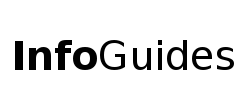Digital humanities (DH) is a broad spectrum of tools and practices that bridge the humanities and computer science. By applying analytical and visualization tools to areas such as history, literature, art, and music, researchers discover new patterns and questions to ask. At the most basic level, DH simply refers to the use of digital tools and methods to further scholarship. At its more complex, DH involves reimagining the way we approach sources and data, research, narrative, and the publication and interpretation of scholarship. The answer to "what is digital humanities?" will often differ depending upon whom you ask. A great example of this is Jason Heppler's What is Digital Humanities? website. Each time you refresh the page you will receive a different answer to the question. Visit Digital Humanities Now for current DH news and scholarship.
These resources will provide you with a more comprehensive idea of what comprises DH, the history of and challenges within the field, and debates about methodologies.
- Julian Chambliss, Reframing Digital Humanities: Conversations with Digital Humanists
- Dan Cohen and Roy Rosenzweig, Digital History: A Guide to Gathering, Preserving, and Presenting the Past on the Web
- Adam Crymble, Technology and the Historian
- Debates in the Digital Humanities series
- Interchange: The Promise of Digital History, Journal of American History
- Bethany Nowviskie, Evaluating Collaborative Digital Scholarship (or, Where Credit is Due)
- Susan Schriebman, Ray Siemens, and John Unsworth, A Companion to Digital Humanities
- Catherine Knight Steele, Jessica H. Lu, and Kevin C. Winstead, Doing Black Digital Humanities with Radical Intentionality
- Scott Weingart et. al., The Digital Humanities Literacy Guidebook
DH research centers at George Mason University
- Center for Mason Legacies. The mission of the Center for Mason Legacies (CML) is to preserve and examine the legacy of George Mason IV (1725-1792), his ancestors and heirs, and the people he enslaved. CML engages student researchers in studying the past and present influences of our university's namesake though a combination of scholarly research, public history, teaching innovation, and community outreach.
- Data and Digital Scholarship Services. Data & Digital Scholarship Services partners with students, faculty, and staff by providing research support to facilitate digital research and teaching across all disciplines at George Mason University.
- Roy Rosenzweig Center for History and New Media. The Roy Rosenzweig Center for History and New Media develops online teaching resources, digital collections and exhibits, open source software, and training in digital literacy and skills.
Visit the Department of History and Art History's website for DH course offerings and degree programs.

